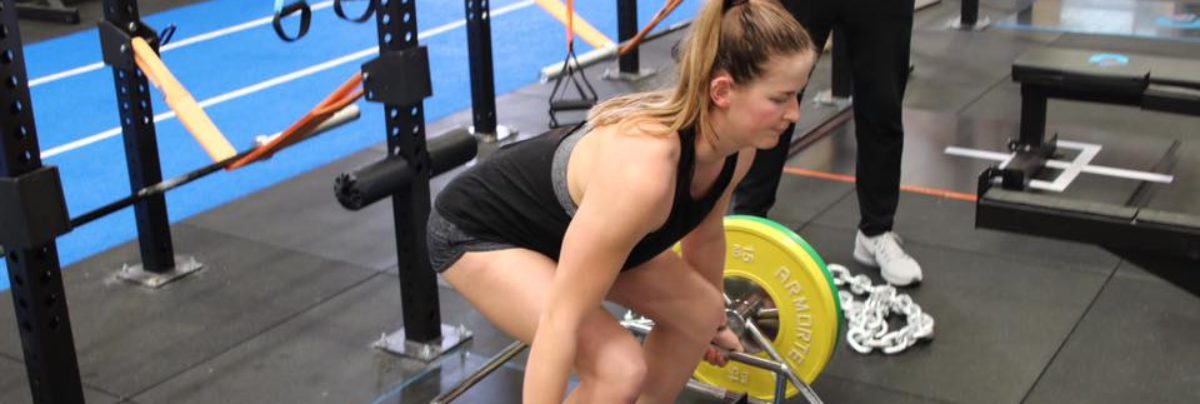No.
Let me explain why this isn’t true.
This myth never seems to go away. It most likely began when a study in 1998 stated, “Strength training with maximal weights is not recommended because of the potential for possible injuries related to the long bones, growth plates, and back” (1). To be honest, I agree with this statement, as we never use maximal weights for strength training with our young athletes. So yes, young athletes should avoid MAXIMAL WEIGHTS, but not strength training altogether. People who do not understand strength and conditioning would be unaware this is the case, thus continuing the myth.
The most common concern we hear is that lifting weights will injure your growth plates at a young age. But what even is a growth plate?
A growth plate is a small cartilaginous plate at each end of long bones. As growth occurs throughout childhood and adolescence, this is the location where new bone formation occurs. If these growth plates are damaged, yes, there can be issues in growth development. But failure to commence strength training may be more detrimental to young athletes’ development as exercise and forces placed on the bones help stimulate the physiological processes for bone growth and density (4, 2). Provided athletes follow the appropriate guidelines and techniques, and there is high-level supervision, there is virtually no risk of damaging the growth plates through strength training.
Now, please don’t forget, yes, damaged growth plates are real. But some of the most common causes of growth plate injuries are from accidents, falling off a bike, falling out of a tree, landing awkwardly or hard during a volleyball match even! Yes, you could potentially injure yourself in the weight room. It happens. But you can also injure yourself playing volleyball. Any injury associated with youth resistance training is almost always due to misuse of equipment or lack of high-level coaching. How can we avoid these injuries? With high-level supervision, emphasis on high-level. There is so much general strength and conditioning information readily available, which is excellent. But the ability to critically evaluate, develop training philosophies, and apply this information based on the athlete is what you can’t obtain from Instagram or the internet. At Diamond, we build your foundation and target your general strength when you commence a strength program with us.
When beginning a strength and conditioning program, we want to target your general strength, building a foundation to set you up for the future. Focusing on your technique and proper positions in everything you do, ensuring you know how to be safe within a gym setting, and educating you on why you are doing something and what we are trying to achieve. It is essential to understand that we base programming and exercise selection on your training age, not your chronological age. Meaning that we have some 15-year old’s who are currently doing programs that are appropriate for adults because they have built a solid foundation, and we trust they are capable and can handle it. We also have some 18-year old’s who are on the same program that we would give to an 11-year-old because they have not built a solid foundation yet.
If you would like to find out more information about starting a strength and conditioning program and how it can improve your performance both on and off the court, feel free to contact us at Diamond.
Corban Wroe | Strength and Conditioning Coach
B.S. Health Science | M.S. Exercise Science (S&C) | ASCA L2
Diamond – High Performance Centre
E: [email protected] W: https://www.diamondfitness.com.au/
- American College of Sports Medicine (ACSM) Current Comment Youth Strength Training. Authors Faigenbaum and Micheli March 1998. Available from www.acsm.org
- Mirtz, T. A., Chandler, J. P., & Eyers, C. M. (2011). The effects of physical activity on the epiphyseal growth plates: a review of the literature on normal physiology and clinical implications. Journal of clinical medicine research, 3(1), 1–7. https://doi.org/10.4021/jocmr477w
- Faigenbaum, Avery. (2007). Resistance training for children and adolescents: Are there health outcomes?. Am J Lifestyle Med. 1. 190-200.
- Resistance training for children and youth – a position stand from the Australian Strength and Conditioning Association (ASCA). Original Publication 2007 Updated 2017. https://www.strengthandconditioning.org/news/692-child-and-youth-resistance-training-position-stand

